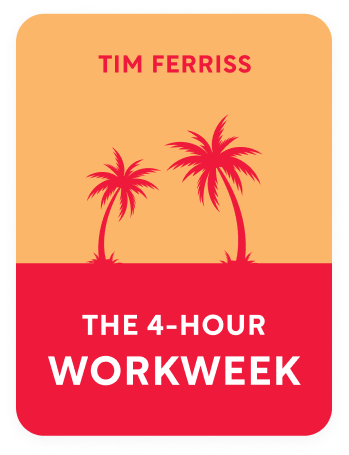

This article is an excerpt from the Shortform book guide to "The 4-Hour Workweek" by Tim Ferriss. Shortform has the world's best summaries and analyses of books you should be reading.
Like this article? Sign up for a free trial here .
What are the best product testing strategies? What methods can you use to see if you have a good product?
There are several product testing strategies and steps. Once you have a product idea, you have to test your products to ensure it will make you money.
Read more about product testing strategies and steps.
Product Testing Strategies
Good product testing strategies can help you decide if your product will succeed in the marketplace. You should research the best product testing methods before testing your product. One of these methods is to test in a small, inexpensive way.
Test Your Products on a Small, Inexpensive Scale
Even people who have a lot of experience in specific industries or good intuition may not be able to foresee what’s going to be successful. Focus groups aren’t any better—it’s easy to say you’d buy something if you don’t actually have to buy it. In this step, you’re going to test your product before spending a lot of money to manufacture it.
There are four sub-steps to this step about product testing strategies:
Sub-Step A: Assess the Competition
Your product is going to have to compete against other similar products. To outcompete them, you must come up with a way to make your version different and better than your competitors’. Follow these instructions to research your competition:
- Google the terms you would use to try to find your product.
- Come up with related terms using keyword suggestion tools such as Google’s Keyword Planner or SEOBook Keyword Tool. Google these related terms as well.
- Look at the top three websites that keep coming up in the searches above.
- Figure out how to make your product different. Some options are:
- Make your product/company more authoritative than your competitors.
- Offer a better guarantee than your competitors.
- Provide better selection than your competitors (if relevant).
- Offer better shipping than your competitors.
Shortform Extended Example—Edgar: Edgar’s competitors offer many hats in addition to Amsterdam hats, so it’s hard to find the Amsterdam hat specifically on their websites. He also learns some of the hats are made in the US (so they’re not really Amsterdam hats), and the ones that are made in Amsterdam take two to four weeks to ship.
Shortform Extended Example—Devi: Devi learns that no one else has ever made a fitness for dragon boating DVD.
Sub-Step B: Create Ads
Another part of the best product testing strategies is to create ads. Create ads for your product that include differences between your and your competitors’ versions of the product, testimonials, and photos. Look at your competitors’ ads and ads you’ve been drawn in by as examples.
Sub-Step C: Test Your Product
You’re going to test your product by advertising it and estimating how many people will buy it. You’ll use direct response advertising so that you can track when an ad leads to a sale. This chapter gives two product testing methods. You can do both if you like:
Option #1: Offer the product on a short eBay auction. This should cost less than $5.
- Shortform Extended Example—Edgar: Edgar sets a minimum price of $50 on an eBay auction and then cancels it at the last minute because he doesn’t actually have a product and wants to avoid legal issues. He receives several bids and the highest one is $75.
Option #2: Create a website and use it to start “selling” your product. Because you don’t actually have a product, you can’t actually sell it to anyone, but you can set up an ordering system that looks like it works. This is legal as long as you don’t collect billing information. To make full use of this option:
- Register a domain name and set up your website. This should cost less than $20.
- Shortform Extended Example—Edgar: Edgar sets up a purchase button and order form on his website. Before the customer can enter their billing details, the website will inform them that the hat is backordered and that the company will let them know when it’s available again.
- Shortform Extended Example—Devi: Devi isn’t comfortable setting up an ordering system without a product, so she gets people to sign up for an email newsletter with tips about fitness for dragon boaters. She estimates that 50% of the people who sign up for the list would have bought the DVD.
- Set up a Google Ads campaign that directs customers to your website. Create ads with different combinations of the search words you researched above. You’re charged every time someone clicks on your ad, so be as specific as possible. That way, the people who click are people who are likely to actually buy. Limit the budget to $50/day. These ads will tell you not only how many people are interested in the product, but also which URLs, search terms, product names, and so on, receive the most traffic. Adjust your settings so that Google rotates all your ads instead of only showing the one its algorithm thinks is most effective. Run the ad for five days, which will cost a maximum of $250.
- Shortform Extended Example—Edgar: Edgar tries two different ad headlines but keeps everything else the same between two ads.
- Shortform Extended Example—Devi: Devi tries two different URLs.
- Use analytic software to track how many people view your site but don’t interact with it
- Shortform Extended Example—Edgar: Edgar uses Google Analytics to look at how many people leave the site before or halfway through ordering.
- Shortform Extended Example—Devi: Devi uses Wufoo to track who signs up for her email newsletter.
Sub-Step D: Tweak and Test Again if Necessary
Product testing strategies also include making adjustments. Based on the test results, assess whether or not your product will be profitable. To keep the math simple, compare how much you spent on ads to how much you would have made if you’d actually sold the product. If you’re not happy with the results, make changes until you have a product and muse you’re happy with.
Shortform Extended Example—Edgar: Edgar spent $100 on ads and made $150. His analytics told him that lots of people viewed his site, but most people left it after viewing the pricing. He thought about what he could change. Instead of dropping the price, he offered a guarantee—if the customers weren’t 100% satisfied with the hats, he’d give them their money back. He retested and the change increased his sales enough to make the product viable.
Shortform Extended Example—Devi: Devi spent $150 on ads and had 20 people sign up for her newsletter. She assumed 50% of those people would buy the DVD, giving ten customers. If she makes $100 on each DVD, she’s made over $1000.
Use these product testing methods to make sure your product is read to go to market and can be profitable.

———End of Preview———
Like what you just read? Read the rest of the world's best book summary and analysis of Tim Ferriss's "The 4-Hour Workweek" at Shortform .
Here's what you'll find in our full The 4-Hour Workweek summary :
- The 4-step process to live a "retired" lifestyle now
- Find out if you're wasting the best years of your life working a 9-5
- How to create a business that makes you money without sucking up your time






